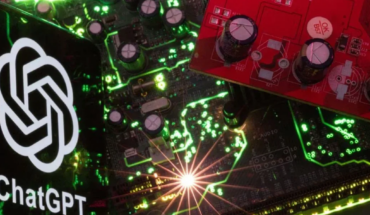Spain-mercury is the great unknown of the Solar system and on it there are more questions than answers, so it is important the next mission to this planet, BepiColombo, which will take off on 20 October with technological ogy toecap and specific, in a completely new 85%. Thus designated it in press conference representatives of the European Space Agency (ESA), responsible for BepiColombo along with the Japanese space agency JAXA, which, after two decades of work, this “complex mission” to be launched from French Guiana.
The take-off, on an Ariane 5 rocket, is planned the day 20 to 01:45 GMT time and the trip to the “mysterious planet” will take 7.2 years. BepiColombo is the first European to mercury mission – although there exists international cooperation, European participation is greater – and will be the third planet closest to the Sun: the first was Mariner 10 NASA – in the 70’s – and the second Messenger, also of the American space agency and which orbited the planet from 2011 until it exhausted its fuel in April of 2015.Estas two missions, especially Messenger, were important to advance in the knowledge of the least explored planet of the Solar system, said Mauro Casale, head of development of the scientific ground segment of BepiColombo, who said that the new mission wants to resolve the questions that the other left open.
BepiColombo will analyze the internal structure of mercury and the generation of the magnetic field, as well as the chemical phenomena of surface, like ice that is located in the craters of the Poles, in permanent shadow and where you can reach 180 degrees bass zero – mercury are also exceeded the 400 degrees-. These extreme temperatures is precisely what makes this mission one of the most complex of the ESA: according to Casale, BepiColombo is equipped with specific, like a painting or a special multilayer protection technology, which will be achieved to safeguard their instruments, both during the long journey as when modules are positioned in the orbit of Mercurio.El name of the mission comes from the Italian Professor Giuseppe ‘Beppi’ Colombo, which had an essential role in the NASA Mariner 10 mission, and it consists of two independent orbitadores, Mercury Planetary Orbiter (MPO, for its acronym in English) and provided by ESA and the orbiter Magnetosferico mercury (MMO), provided by the Japanese space agency, JAXA. Both will be thrown together and arrive at their destination due to the mercury transfer module (MMT), which will propel them on a journey that will last more than seven years (once to separate the MMT will be the European Orbiter which is responsible for the final propulsion up to) Mercury and the Japanese ship will be the first to break off to go to its orbit).
The long life is due to that the journey to mercury, if the goal is to position the modules in orbit of the planet, is not direct; they need to make a series of complex maneuvers of braking both on the way in the final phase of insertion into the orbit of the planet, explained Santa Martínez, Coordinator of the scientific processing and filing of ESA. The objective is that modules are adapted to the orbit of mercury and reach it at a speed similar to Earth. BepiColombo will conduct 18 orbits around the Sun and for reducing its speed, on the trip will help the severity of three planets in a total of nine flights – one to Earth, two Venus and six mercury-, summed up Martinez.
BepiColombo.
Photo: Screen shot / that Spain also has an electric propulsion system that provides 4 kilometers per second braking. The mission, with solar panels, includes also some “selficamaras” that will be used to remove images in the cruise phase. BepiColombo, accumulating several delays, is ready to be launched now and when mercury reaches its phase scientific, that it will begin in 2026, it will last a year, renewable all the scientific data will be processed and archived at the headquarters of the ESA in Villanueva de la Cañada (ESAC), near Madrid, while as the antenna in Cebreros, Avila (Center), will be the main receiving – will receive and send signal to BepiColombo-.have contributed more than 80 companies from 12 countries, also Spain, who has participated in the development of electronic components, antennas low gain or in components for the thermal control. BepiColombo, project which was attended by 80 companies from twelve countries with a cost estimate of 2,400 million euros (2727 million dollars), will end with the collision of their modules in mercury.
In this article: BepiColombo mission to mercury Europe Spain DT





